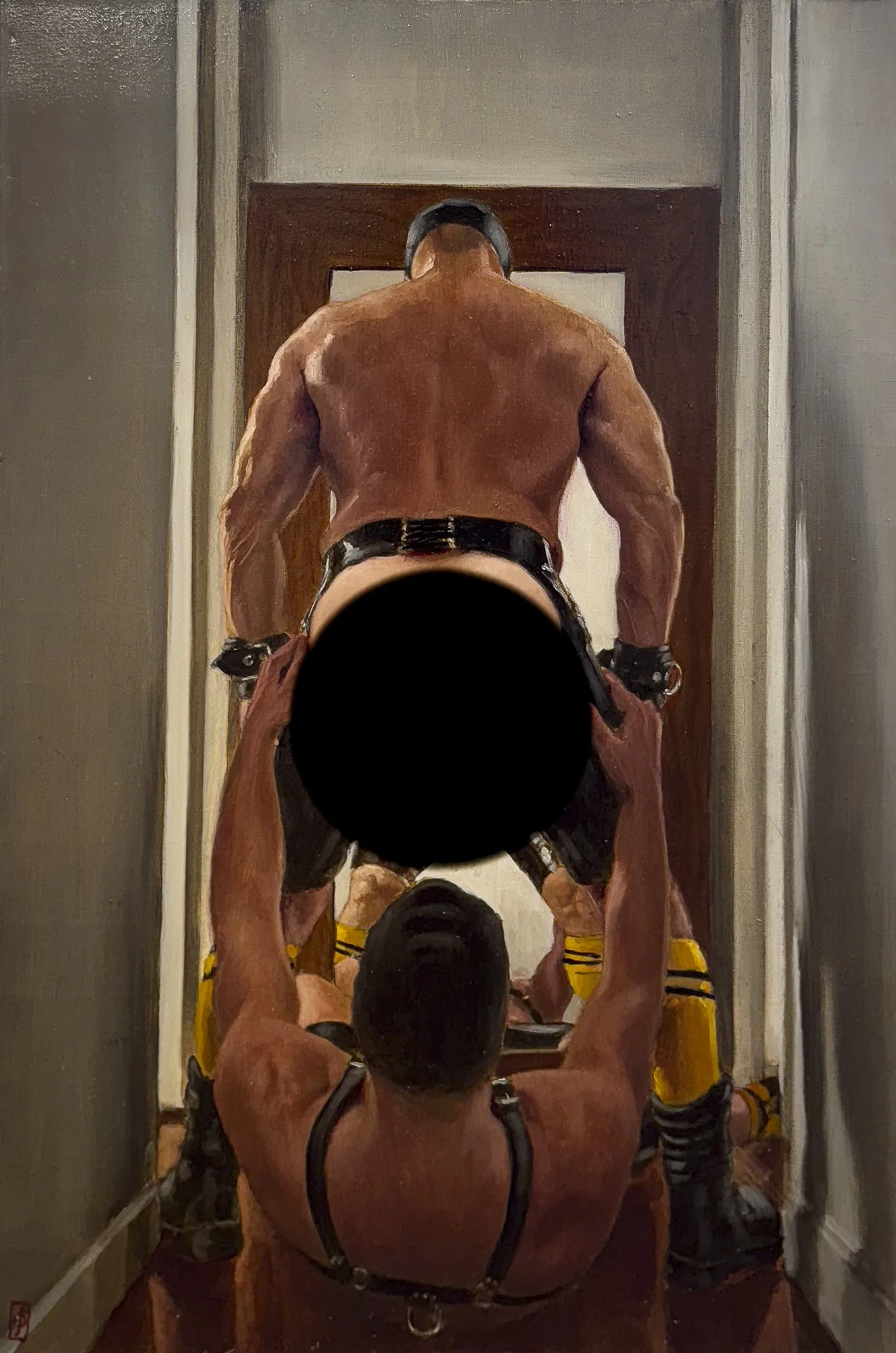Orpheus, a masterful, largely self-taught oil painter based on England’s south coast, commands a rare and virtuosic technique that elevates his provocative depictions of gay sexuality into the realm of high art. For years, he refined his craft in secrecy, perfecting an intricate, labor-intensive process while maintaining a ‘respectable’ career as an international civil servant. His clandestine paintings, charged with the raw intensity of forbidden encounters, demanded extraordinary skill to capture their fleeting, visceral essence. Since leaving his job to dedicate himself to art, Orpheus’s work has surged in scale and ambition, culminating in FILTH, his first major public exhibition. Exclusively represented by Greg Salvatori Gallery, Orpheus further cemented his reputation as artist-in-residence at the Tom of Finland Foundation in Los Angeles in 2025.
His paintings plunge viewers into the raw underworlds of gay life—backrooms, sex clubs, and fleeting hotel encounters—charged with desire yet steeped in longing for connection. Using techniques inspired by Old Masters, Orpheus builds his works with monochrome underpaintings and layered glazes, employing rare pigments like lapis lazuli for luminous depth. This meticulous, time-intensive process, rarely seen today, infuses his explicit subjects with timeless gravitas, blending the immediacy of Francis Bacon with the precision of Vermeer.
Orpheus’s skill is further evident in his sophisticated interplay of light and shadow, inspired by the chiaroscuro and tenebrism of Caravaggio and Valentin de Boulogne. His complex compositions, with their twisting, muscular bodies, recall the dynamic statuary of Bernini or the altarpieces of Rubens and Tintoretto, demanding an acute understanding of anatomy and perspective. Infused with the visceral textures of Lucian Freud, and Michaël Borremans, Orpheus’s canvases are a testament to his ability to marry raw immediacy with classical rigor.
Rooted in a youth spent in the English Midlands during the AIDS crisis and Section 28, where homosexuality was silenced, Orpheus’s art is shaped by a tension between shame and self-acceptance. His formative years at a hyper-masculine all-boys school and wanderings through the Louvre as a teenager in Paris ignited a lifelong obsession with historical art, fueling his mastery of its techniques. In FILTH, Orpheus celebrates kink culture, peeling back its explicit surface to reveal universal themes of intimacy, loneliness, and truth. Orpheus’s rare, exacting methods—demanding patience, precision, and an almost obsessive dedication—set him apart as a singular talent. His work, as John Rechy’s City of Night suggests, captures the fleeting intersections of lives—intimate yet incomplete, sacred yet profane—inviting us to embrace the raw, passionate essence of human connection through the lens of a true master craftsman.






